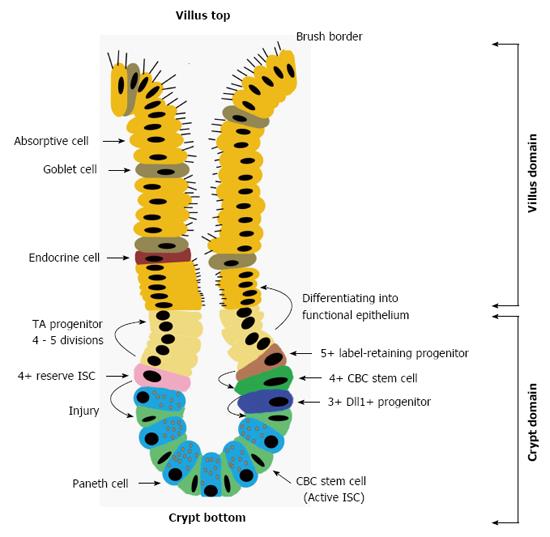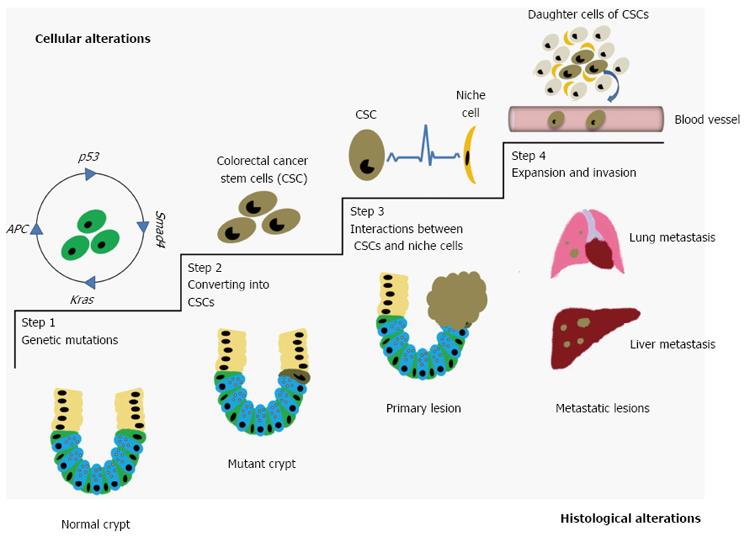Copyright
©The Author(s) 2016.
World J Gastroenterol. Aug 21, 2016; 22(31): 7099-7110
Published online Aug 21, 2016. doi: 10.3748/wjg.v22.i31.7099
Published online Aug 21, 2016. doi: 10.3748/wjg.v22.i31.7099
Figure 1 Structure of villus-crypt axis.
There are two pools of stem cells within crypts, the CBC stem cells and 4+ reserve ISCs. The former ones maintain homeostasis of intestinal epithelium under intact condition through producing TA progenitors, while the latter ones are responsible for epithelial regeneration after injuries by converting themselves into CBC stem cells. Besides, some progenitors can reprogram themselves into active ISCs upon tissue injuries. ISC: Intestinal stem cell; TA: Transit-amplifying.
Figure 2 Relationship between intestinal stem cell genetic alterations and colorectal cancer development.
Step1: Sequential mutations of APC, p53, Smad4 and Kras in ISCs; Step2: Normal ISCs are converted into CSCs; Step 3: By using the feeding from niche cells, CSCs expand their numbers along with producing daughter cells to form a solid tumor; Step 4: Upon escaping from their primary sites, some CSCs will systematically migrate into other organs to form metastatic lesions. ISCs: Intestinal stem cells.
- Citation: Cui S, Chang PY. Current understanding concerning intestinal stem cells. World J Gastroenterol 2016; 22(31): 7099-7110
- URL: https://www.wjgnet.com/1007-9327/full/v22/i31/7099.htm
- DOI: https://dx.doi.org/10.3748/wjg.v22.i31.7099










